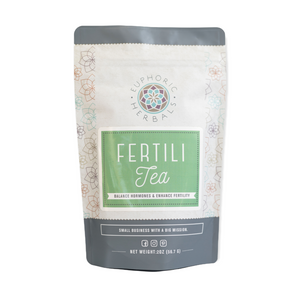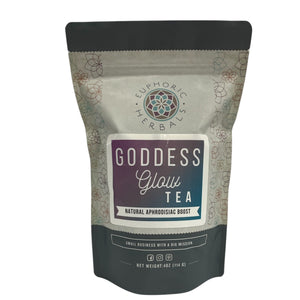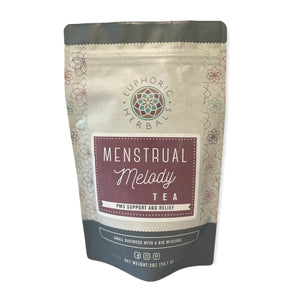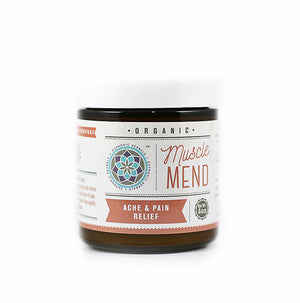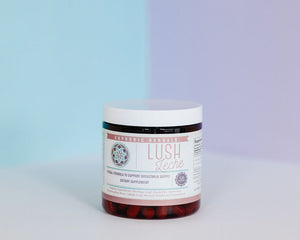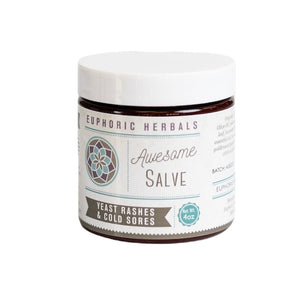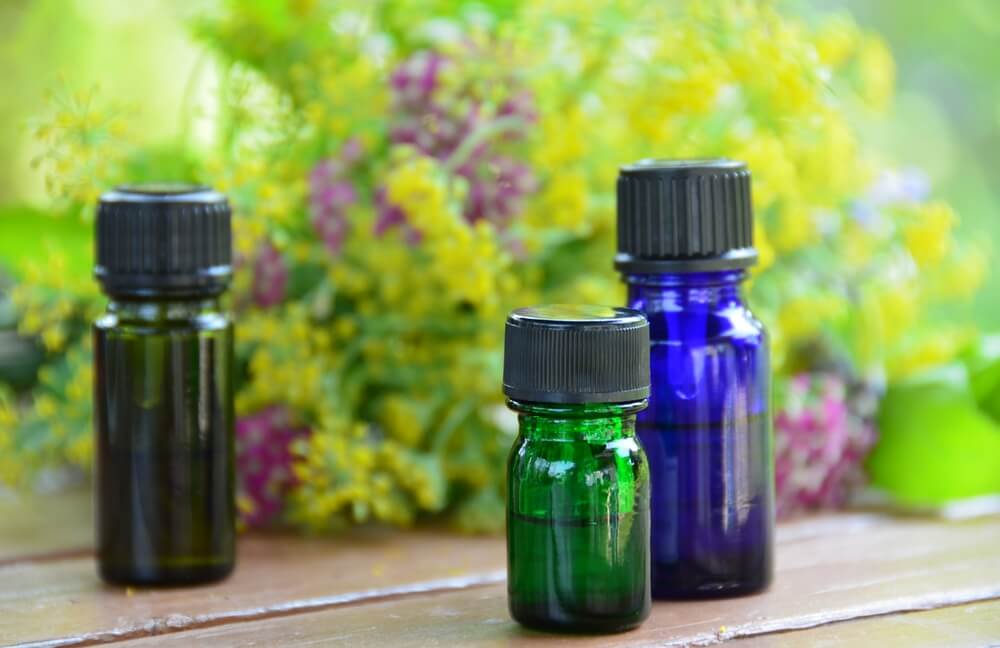If you love using essential oils for yourself, it's only natural to wonder about using them for your children. After all, they have many beneficial properties and offer relief for some everyday ailments.
The good news is you can use essential oils for your little ones- with a few added safety precautions. There are some oils that are more kid-friendly than others, but you still have a wide range of options to choose from.
Here's more on the general guidelines for using essential oils for kids, plus the top ones to keep in your home.
Safely Using Essential Oils for Children
In general, certain essential oils can safely be used topically and aromatically for children. That being said, you need to be more careful about how much you use and keep an eye out for sensitivities.
Remember that children have more delicate and thinner skin than adults do. Their other body systems (lungs, brain, digestion, etc.) are also more sensitive and can be "overpowered" if you use too much of an oil.
Here are the top tips/guidelines when it comes to using essential oils for kids:
- Age- Experts have different opinions on how old children should be before using essential oils. Many recommend never applying oils to babies, and some recommend not even starting until age 7. In general, however, "kid-friendly" oils can usually be used for children 2 years and older with a few exceptions. At the end of the day, you have to make the decision about when your child is old enough for essential oils, consulting an aromatherapist and/or pediatrician as necessary.
- Dilution- Essential oils should be very diluted before being applied to children, especially when you first start out. A 0.25% dilution is recommended for age 2, up to 2% by age 6, and up to 3% by age 12. Always start at the low end and work up gradually until you notice the oil having an effect. For reference, a 0.25% dilution is just two drops of essential oil in 2 tablespoons of carrier oil. Also, start with smaller amounts in a diffuser than you would use for yourself.

- Test First- It's always a good idea to apply a new essential oil to a small patch of skin as a test. Simply dilute it properly and dab it on your child's arm to see if there is any reaction. Most happen within 30 minutes, but give it 24 hours to be sure. Also, try to introduce oils one at a time so that if there is a reaction, you know exactly which one caused it.
- Quality Matters- You should only use 100% pure, therapeutic grade essential oils for yourself, but this is especially important for children. Avoid buying from "big box" stores and choose a brand that has third-party testing for quality.
- Take Precautions- Common sense goes a long way when it comes to safely using essential oils for children. Never put them directly in their eyes, ear canals, nose, or any mucous membrane. This also means being careful that your child doesn't get oil on their hands only to rub it in their eyes, etc. Many kids love essential oils. They are attracted to the smell and want to imitate you using the bottles. For this reason, be sure to keep all your oils out of reach so that no accidents happen!
Top Kid-Friendly Essential Oils
Lavender
Lavender essential oil is one you always want to have on hand. It's gentle on skin and can soothe itchiness, irritation, and even sunburn. The aroma of lavender is calming and can help a wired mind relax and sleep.
You can use it to help with nervousness (like on the first day of school) or spray it on a pillow to encourage rest.
Tea Tree

Tea tree is another great oil to have at home, especially if you have children who are prone to scrapes and cuts. It helps to "clean up" skin and can also purify the air when diffused.
Applied to the chest or bottoms of the feet, tea tree helps to open airways for easier breathing. It has a clean, fresh scent and makes a great addition to non-toxic DIY cleaning sprays for any messes kids might make.
Citrus
With their bright and cheerful fragrances, citrus oils are often a favorite of children. They are some of the best essential oils for boosting mood, reducing anxiety, and improving mental focus.
Citrus oils also have a special ability for encouraging a sense of "emotional security", so they can be very supportive for kids going through a difficult time.
Some favorites include lemon essential oil, sweet orange, lime, bergamot, and grapefruit.
Keep in mind that citrus oils can make skin photosensitive when applied topically, so it's generally better to diffuse them for children.
Cedarwood
Cedarwood essential oil has a sweet, woody fragrance that promotes relaxation and sleep. It also acts as a natural deodorizer when diffused and offers respiratory support. Cedarwood works well with lavender and/or sweet orange to calm small minds.
Chamomile

The herb chamomile is one of the best and most used for children, and the essential oil is pretty great as well. It has a sweet, floral scent that calms mind and body. You can also apply it diluted over an upset tummy to ease discomfort.
If you do choose to use essential oils on children under 2, chamomile does have a history of use for calming sleepless babies and relieving colic.
Geranium
Geranium is another floral oil that is sweet and uplifting. It can calm the mind and even help with feelings of sadness. Geranium is also soothing and gentle on delicate skin, helping to ease irritation.
Vetiver
Vetiver essential oil is perhaps most useful as a bedtime oil. It has a well-known ability to calm the mind and promote relaxation, something many kids who have a difficult time winding down need. Vetiver does have a very strong scent, so you may want to combine it with other oils like lavender, lemon, or bergamot.
Frankincense
Frankincense is a wonderful all-around oil for children. It has calming properties, an immune-boosting effect, and also offers respiratory support. When applied to the skin, this gentle oil can help with bumps and bruises, irritation, and swelling.
Peppermint
Peppermint is a powerful essential oil that has a cooling effect when applied to skin. It also offers respiratory support, eases muscle tension, and boosts energy and focus. Combine it with lavender and lemon for seasonal relief.
Note: Because of its high menthol content, peppermint is very strong. Some experts recommend not using it until age 6 or older.
Spearmint
Spearmint essential oil has many of the same properties as peppermint oil but is milder and lower in menthol than peppermint. It's a better choice for younger children and is mood-lifting, calming, and focus-boosting. You can also apply over an upset tummy for relief.
Eucalyptus

Eucalyptus oil is one of the best for respiratory support and clearing congestion. It can be diffused or applied to the chest or feet for this purpose and will also help to purify the air. Eucalyptus also improves circulation and can ease muscle tension.
Note: Eucalyptus is another strong oil and some recommend not using it until age 10 or older.
Cypress
Cypress has an herbaceous, evergreen fragrance that is very helpful for respiratory support, particularly during times of illness, and is also soothing for the emotions. It can be used as an alternative to eucalyptus for younger children.
Other evergreen oils like pine, spruce, and fir can also help with congestion and clear breathing.
Clary Sage
Clary sage is a great oil for boosting focus and clear thinking (perhaps during homework time). It's also mood-lifting, supports healthy digestion, and promotes easy breathing.
Copaiba
Copaiba essential oil provides very gentle yet powerful support for children. It has a relaxing effect, supports respiratory function, and also calms inflammation. This makes it useful for skin irritation or sore muscles.
Precautions
Even though these essential oils are generally considered kid-friendly, that doesn't mean your child won't have a reaction to one. Always proceed with care and consult a natural health practitioner as needed.
Kid Safe Essential Oil Blends
If you want to know for sure you have a blend that's safe for children, check out these KidSafe blends (many of them contain oils from this list):
Now your kids can join in the fun of using essential oils and benefit from them at the same time!
Disclaimer: This post is for informational purposes only. It does not constitute medical advice and should not be substituted for medical advice. Please consult your health care provider, herbalist, midwife, or naturopathic physician before taking herbs, supplements, etc. Here's the link to our full disclaimer.






















































